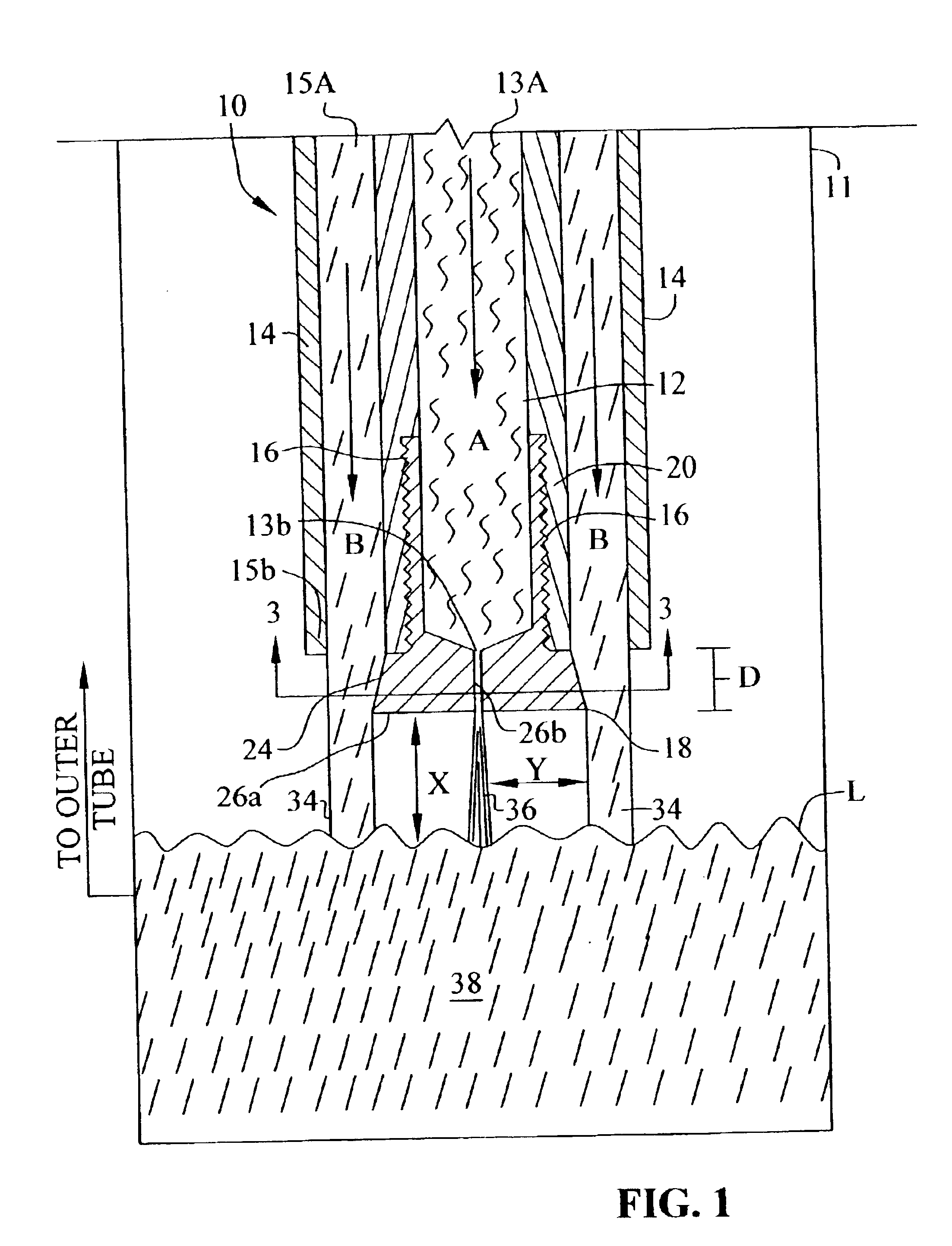Method and apparatus for producing decabromodiphenyl alkanes
a technology of decabromodiphenyl alkane and apparatus, which is applied in the field of methods and apparatus for producing decabromodiphenyl alkane, can solve the problems of manufacturer being unable to stop, the dip tube used for adding diphenyl alkane to the vessel is prone to plugging, etc., and achieves the effect of improving the purity and color of the end produ
- Summary
- Abstract
- Description
- Claims
- Application Information
AI Technical Summary
Benefits of technology
Problems solved by technology
Method used
Image
Examples
example
A 3000 gallon glass lined Pfaudler reactor was equipped with a vertical H-type baffle, condenser system, 41″ Pfaudler Cryo-lock reverse curve agitator, temperature sensor, and the dip tube apparatus described above. 21,210 kg (132,278.41 moles) of liquid bromine and 63.5 kg (476.26 moles) of aluminum chloride were charged to the reaction vessel. The agitator was then turned on and ranged in speed from 47 to 88 rpm. The reactor was heated to 55° C. 618 kg (3395.6 moles) of DPE was then charged through the dip tube, as described above, at a rate of 4-8.5 lbs. / min. The DPE addition ranged from 3.5 to 5 hours. Once the feed was completed, the reaction temperature was increase to 60° C. and held at that temperature for thirty minutes.
A 4000 gallon glass lined Pfaudler reactor was equipped with a vertical H-type baffle, condenser system, 41″ Pfaudler Cryo-lock reverse curve agitator, and temperature sensor. The vessel was charged with 1850 gallons of water. The water was then heated to 70...
PUM
| Property | Measurement | Unit |
|---|---|---|
| distance | aaaaa | aaaaa |
| velocity | aaaaa | aaaaa |
| pressure | aaaaa | aaaaa |
Abstract
Description
Claims
Application Information
 Login to View More
Login to View More - R&D
- Intellectual Property
- Life Sciences
- Materials
- Tech Scout
- Unparalleled Data Quality
- Higher Quality Content
- 60% Fewer Hallucinations
Browse by: Latest US Patents, China's latest patents, Technical Efficacy Thesaurus, Application Domain, Technology Topic, Popular Technical Reports.
© 2025 PatSnap. All rights reserved.Legal|Privacy policy|Modern Slavery Act Transparency Statement|Sitemap|About US| Contact US: help@patsnap.com


